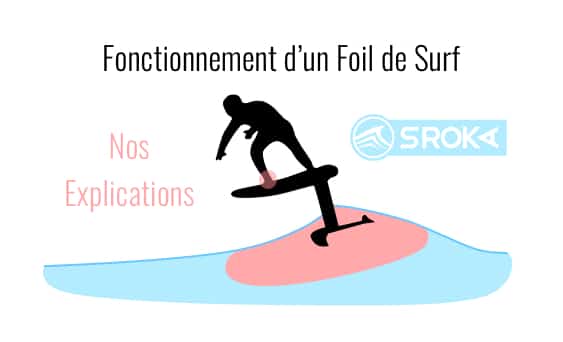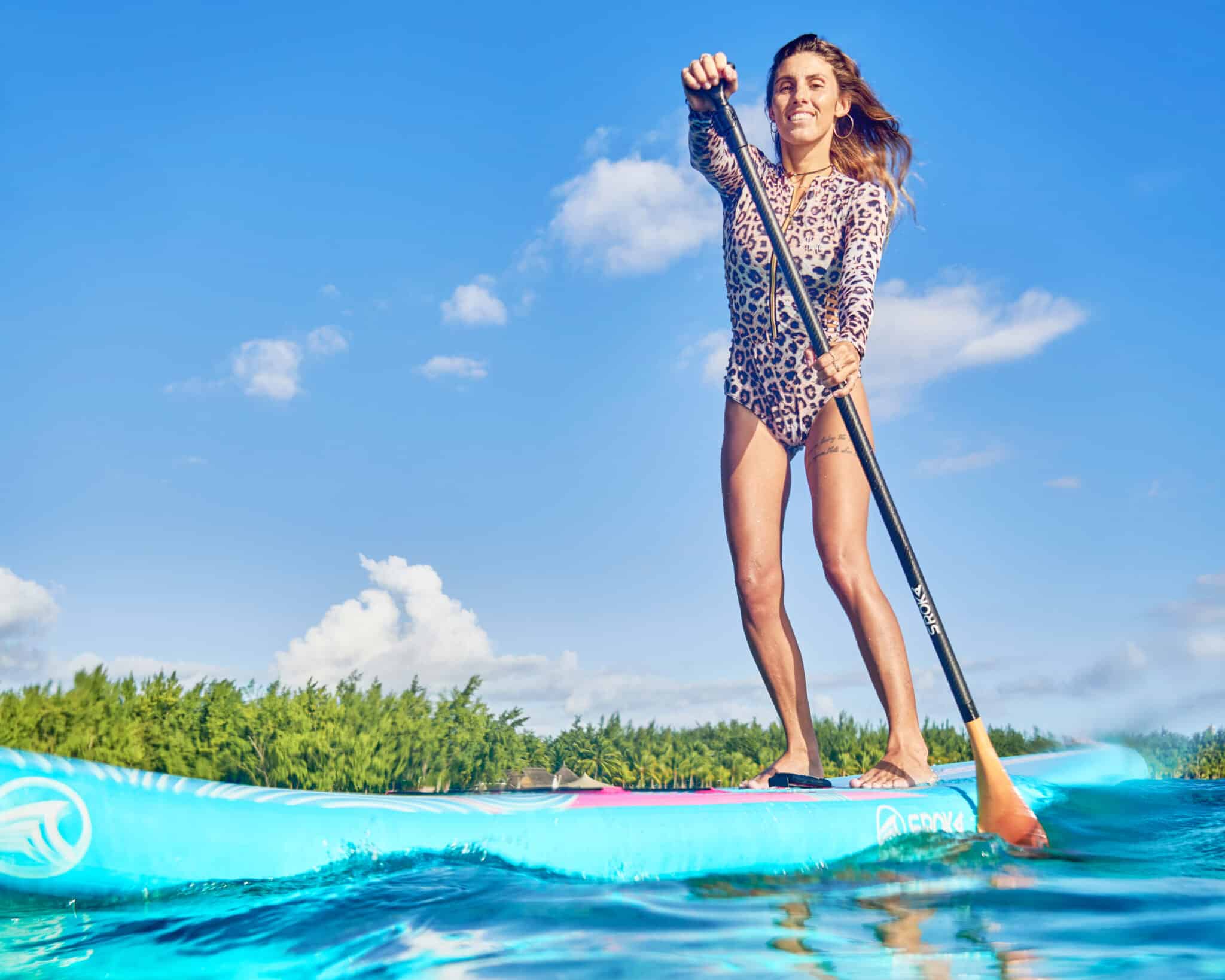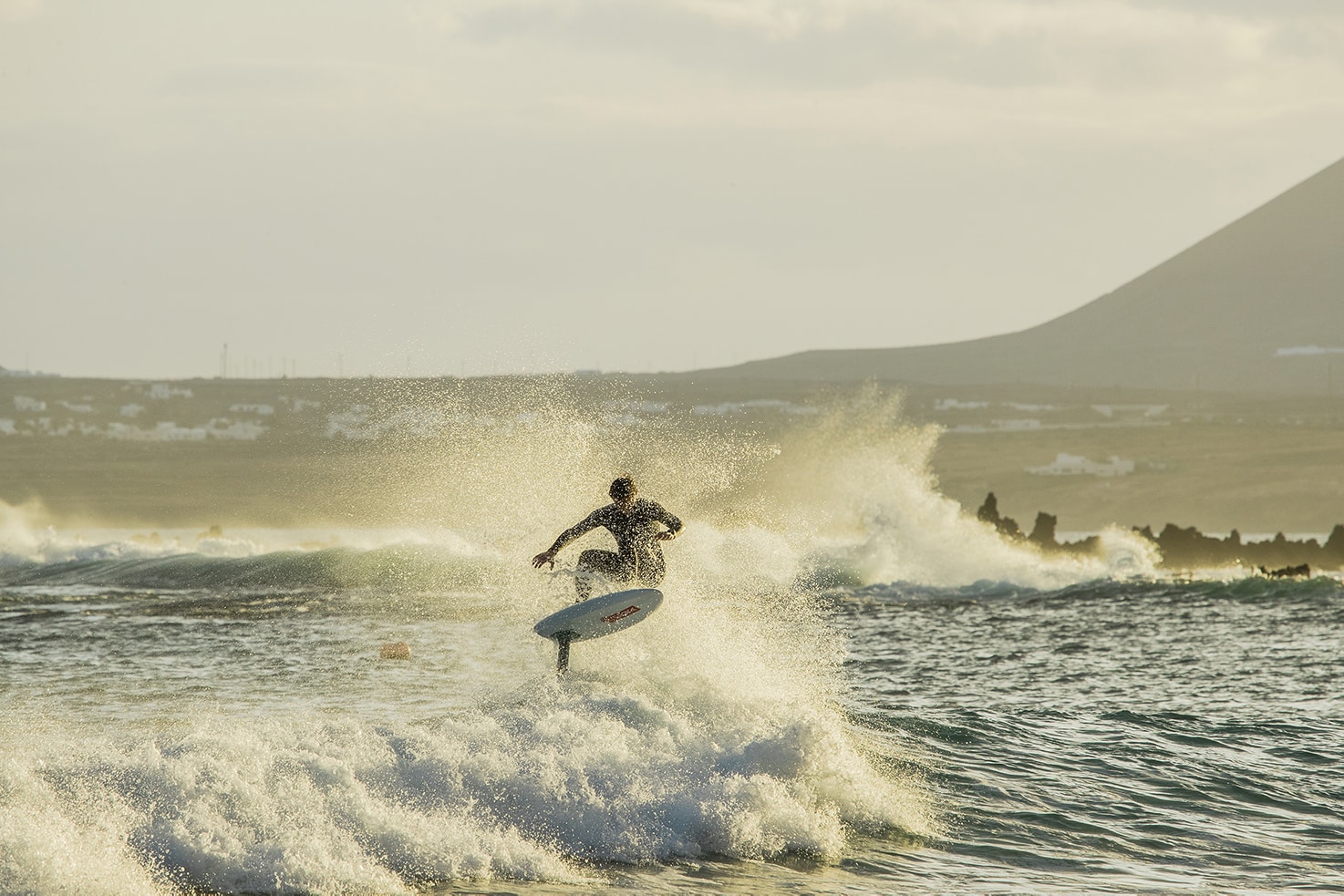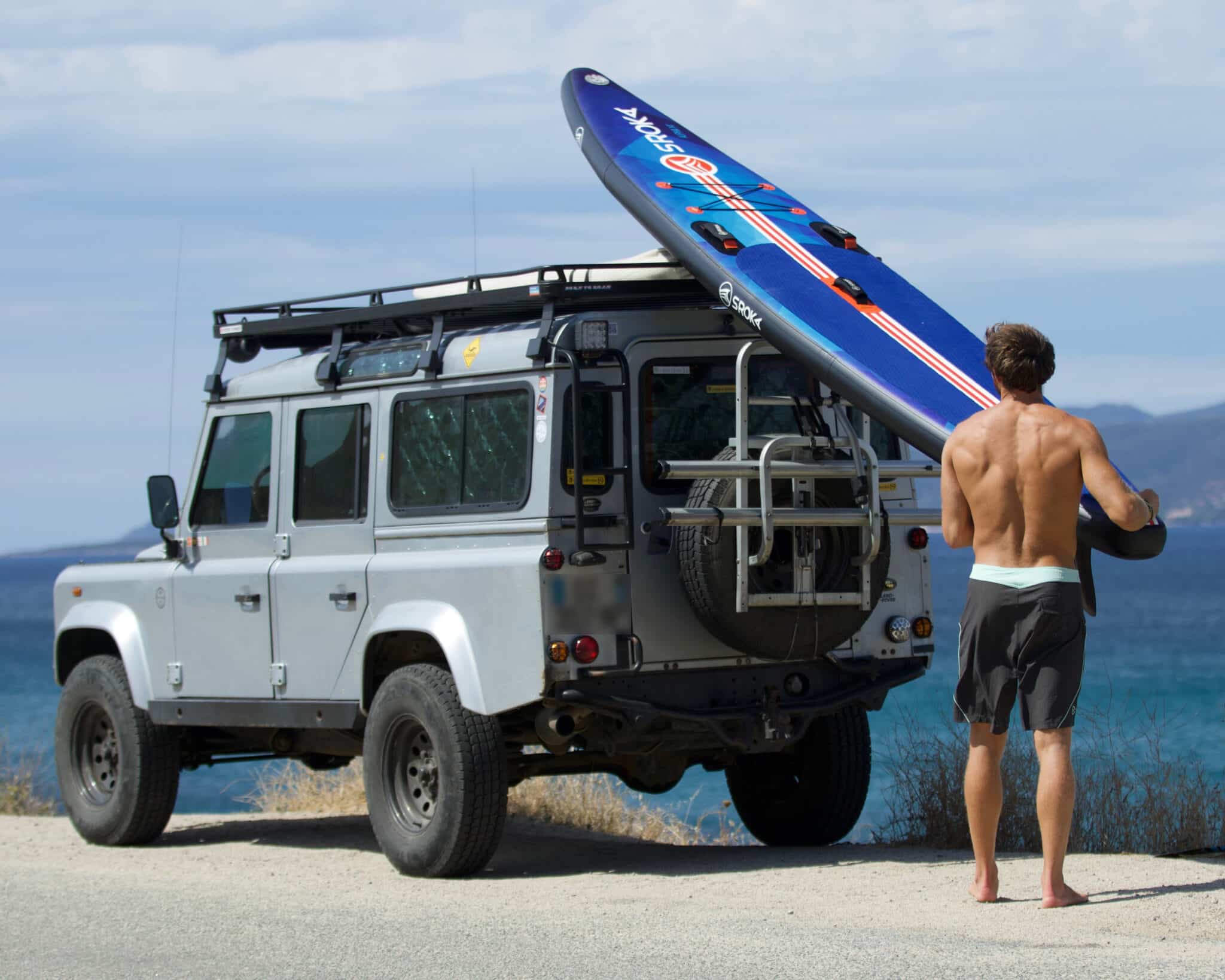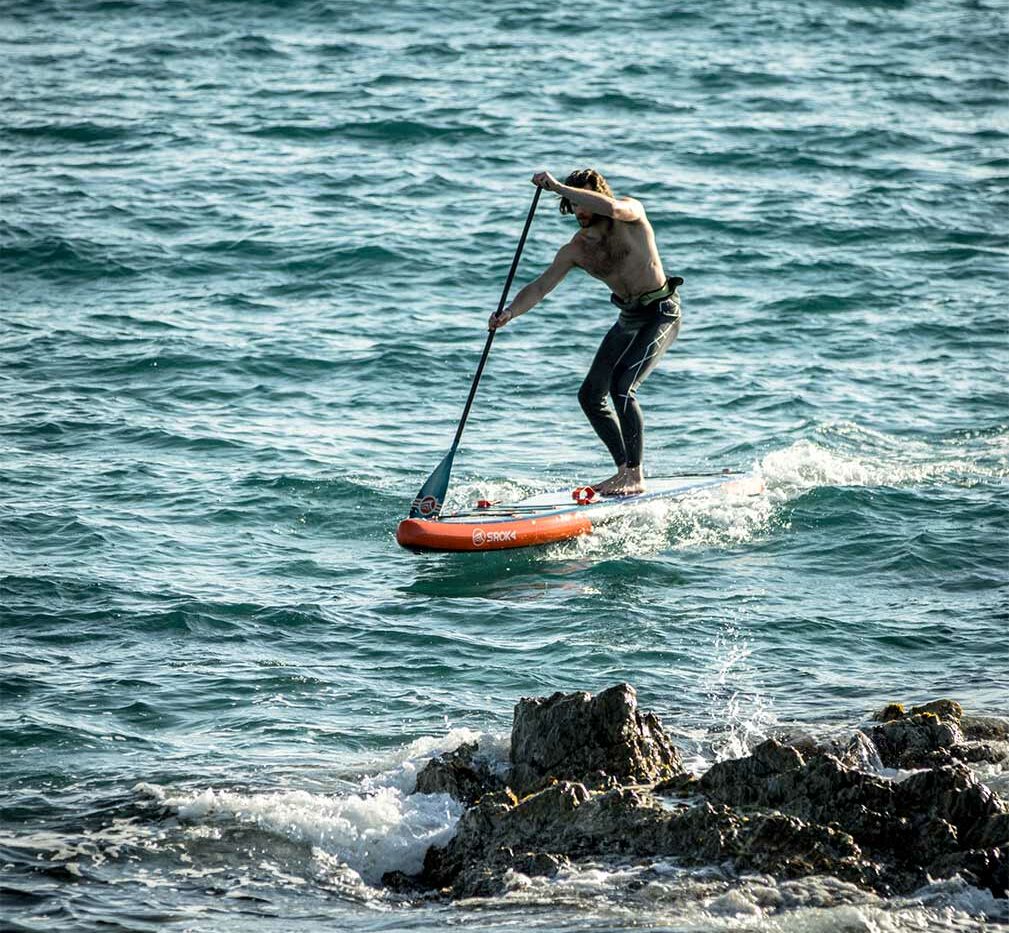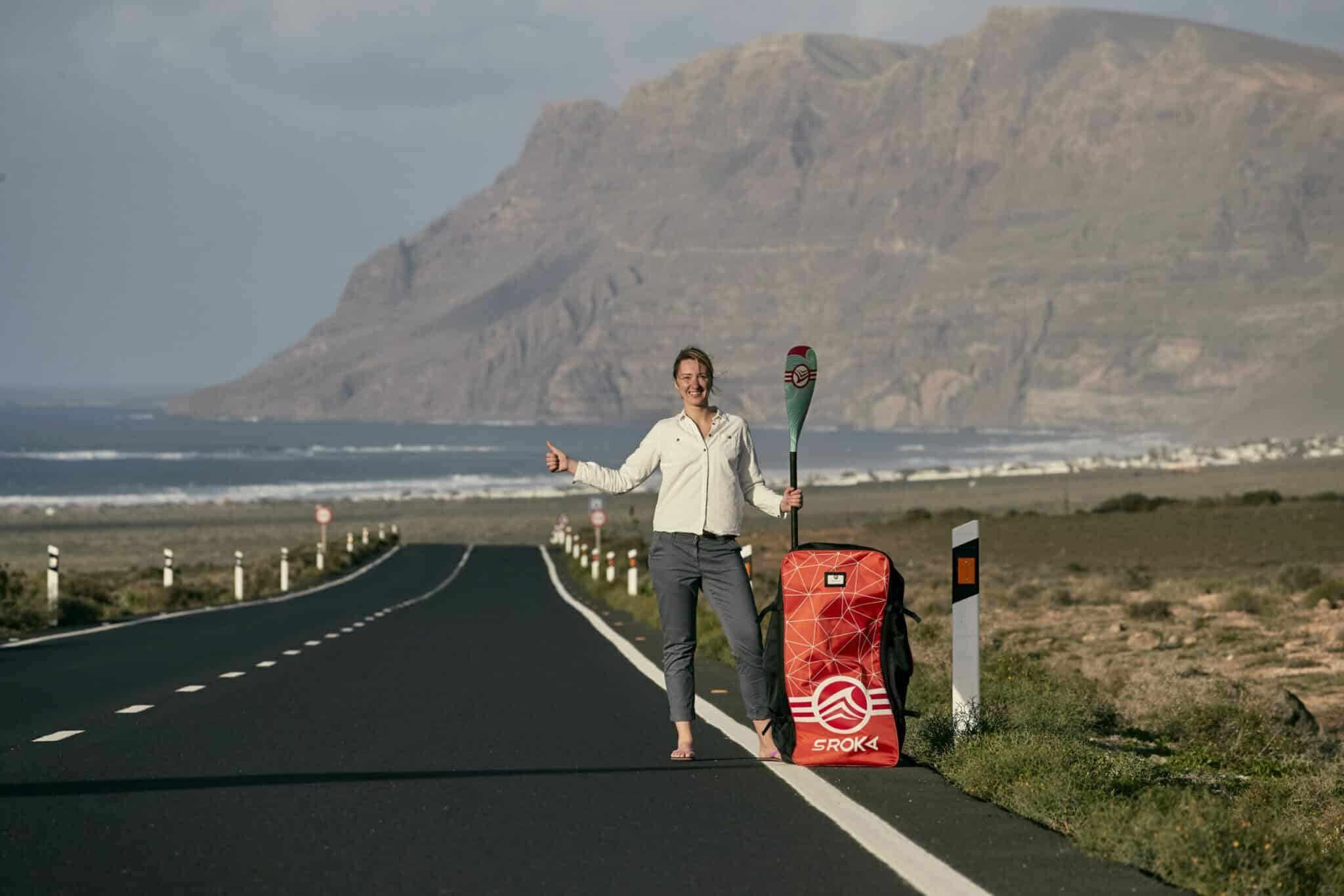 LE MAGAZINE
LE MAGAZINECan you surf with an inflatable paddle?

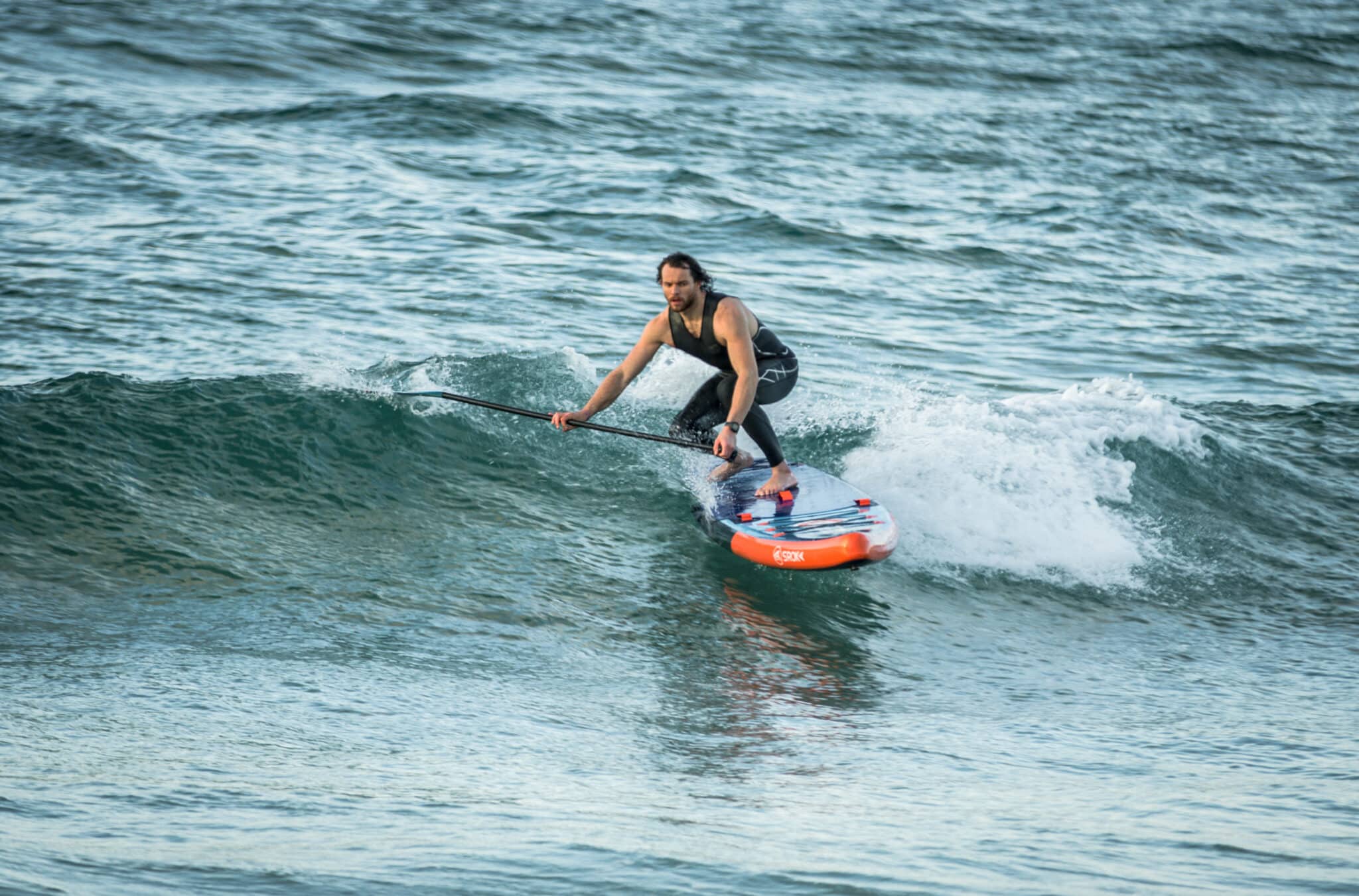
Inflatable paddles offer a host of advantages. More practical, it inflates and deflates to your heart’s content in no time at all. The SUP inflatable paddle is also easy to transport and versatile. Inflatable stand-up paddling is generally practiced on flat water, but it is also possible to surf with an inflatable stand-up paddle. In this article, you’ll find all our advice on how to start having fun in the waves with your inflatable SUP.

Prerequisites for surfing with an inflatable paddle
- To start surfing with an inflatableSUP it’s advisable to already have a good balance on the board. The more comfortable you are on your paddle, the easier it will be to surf with it.
- Master basic maneuvers such as paddling and turning. To catch a wave, you’ll need to turn around quickly and efficiently. Here you’ll find all our tips for stand-up paddle turning.
- Knowing how to fall when paddling. The SUP in waves is much less stable than on flat water, so you’re more likely to fall. So you need to know how to fall properly and get back on your board easily.
If you need advice on how to learn to paddsrokacompany.com/…/nos-conseils-pour-apprendre-le-stand-up-paddlele, follow the guide!
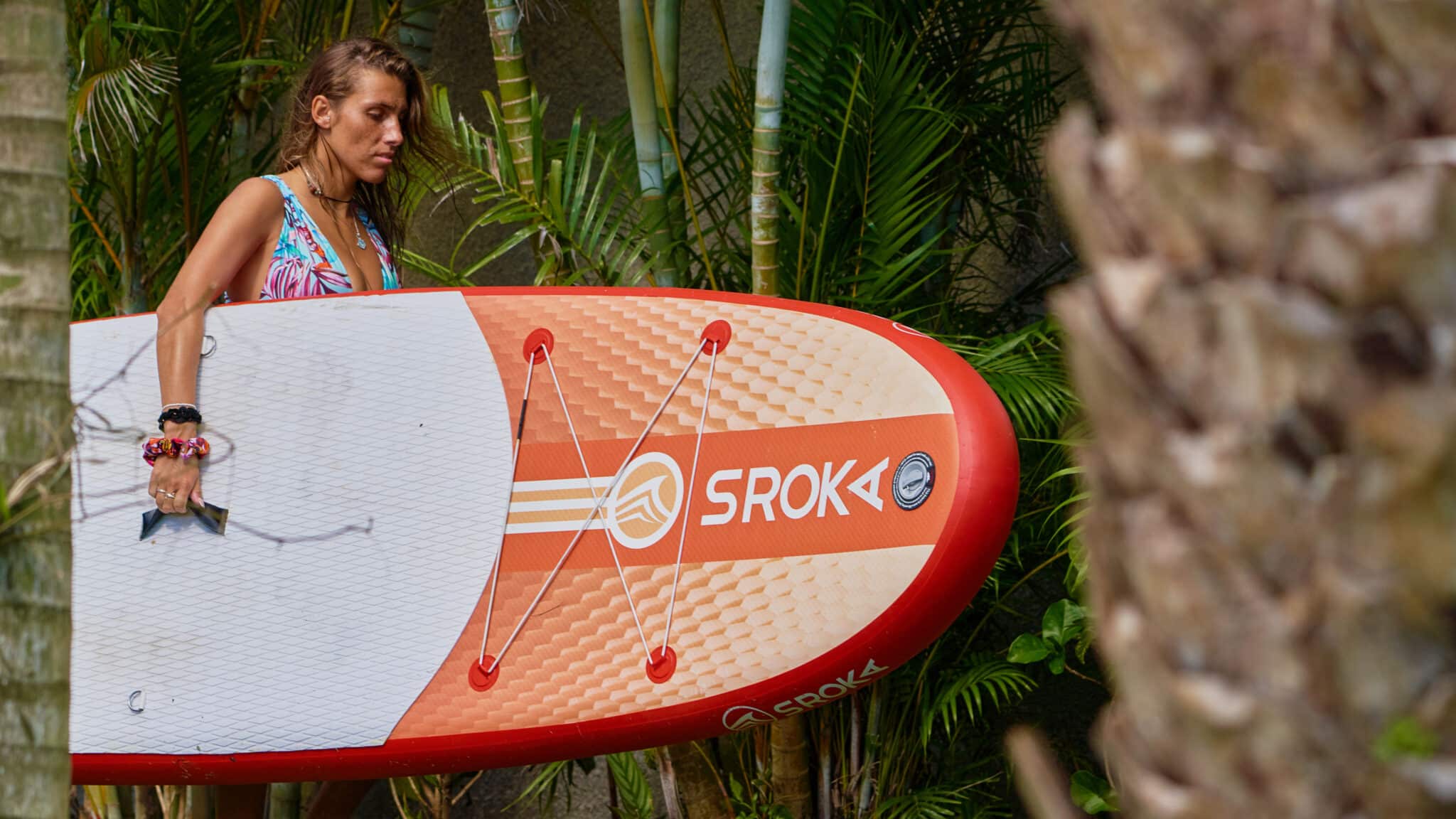
What equipment should you choose for paddle surfing?
For inflatable paddle surfing, it’s essential to have the right equipment to get the most out of your session. When choosing your paddle, pay attention to several points:
- Choose small SUP paddles like the Waves 9’5 or the Malibu 10′ and 10’6. A small paddle, without being too small, provides good maneuverability on the wave. Conversely, an inflatable paddle that’s too big will limit your ability to have fun on the wave, and you’ll find yourself stuck on a linear trajectory.
- Choose a paddle with three fins. This is essential for good grip and stability. In wave conditions, having three fins will also give you more maneuverability.
- To surf with an inflatable paddle, you need a rigid SUP. For greater rigidity, opt for a construction with three layers of PVC on the rails, termowelded together for greater rigidity and lightness. At SROKA, all our inflatable paddles are equipped with two to three layers of top-quality PVC on the rails. The whole is assembled with Fusion technology, the best termowel technology for perfect rigidity.
- The thickness of the inflatable paddle is also important. The thinner the SUP, the better the feel. Ideally, a stand-up paddle should be 4′ or 5′ thick. If your SUP is also used for touring, it can be up to 6′.
- Finally, opt for a SUP with rocker to ride the wave comfortably and get through the chop. Make sure the outline is rounded and the pads grippy. This will facilitate your maneuvers.
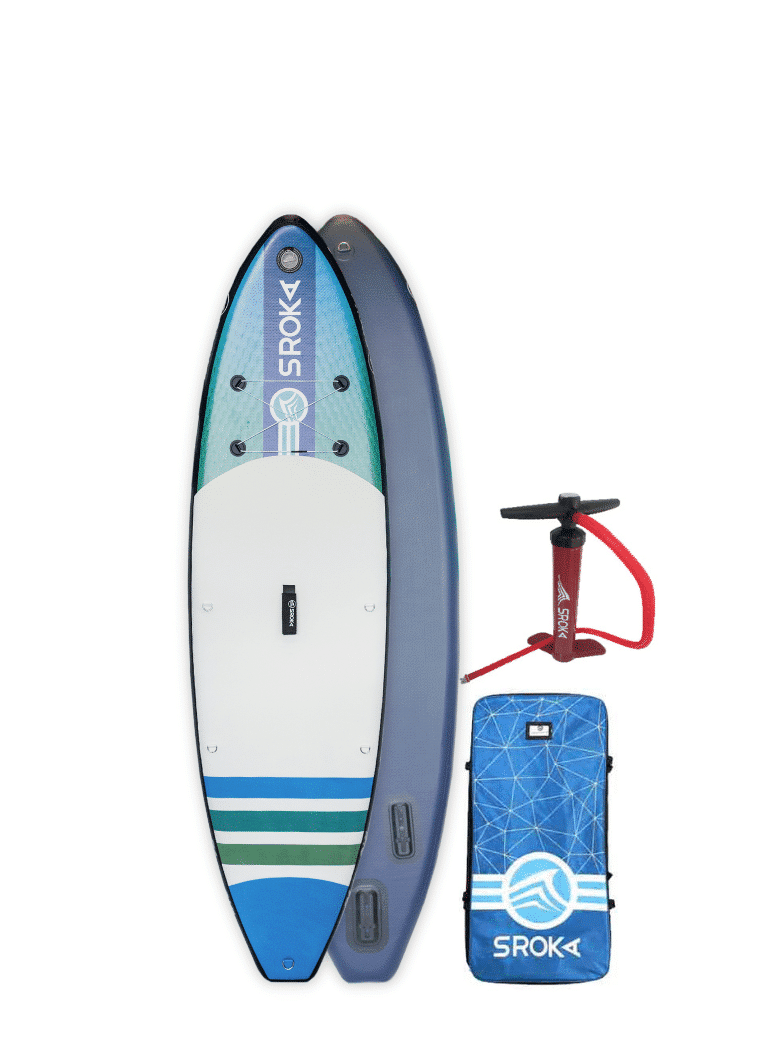
Our selection of inflatable paddles for surfing
The 100% surf paddle: the WAVE
As its name suggests, the Wave paddle is the perfect paddle for fun in the waves. Fusion technology, high-quality materials and three layers of top-grade PVC on the rails provide the rigidity essential for surfing.
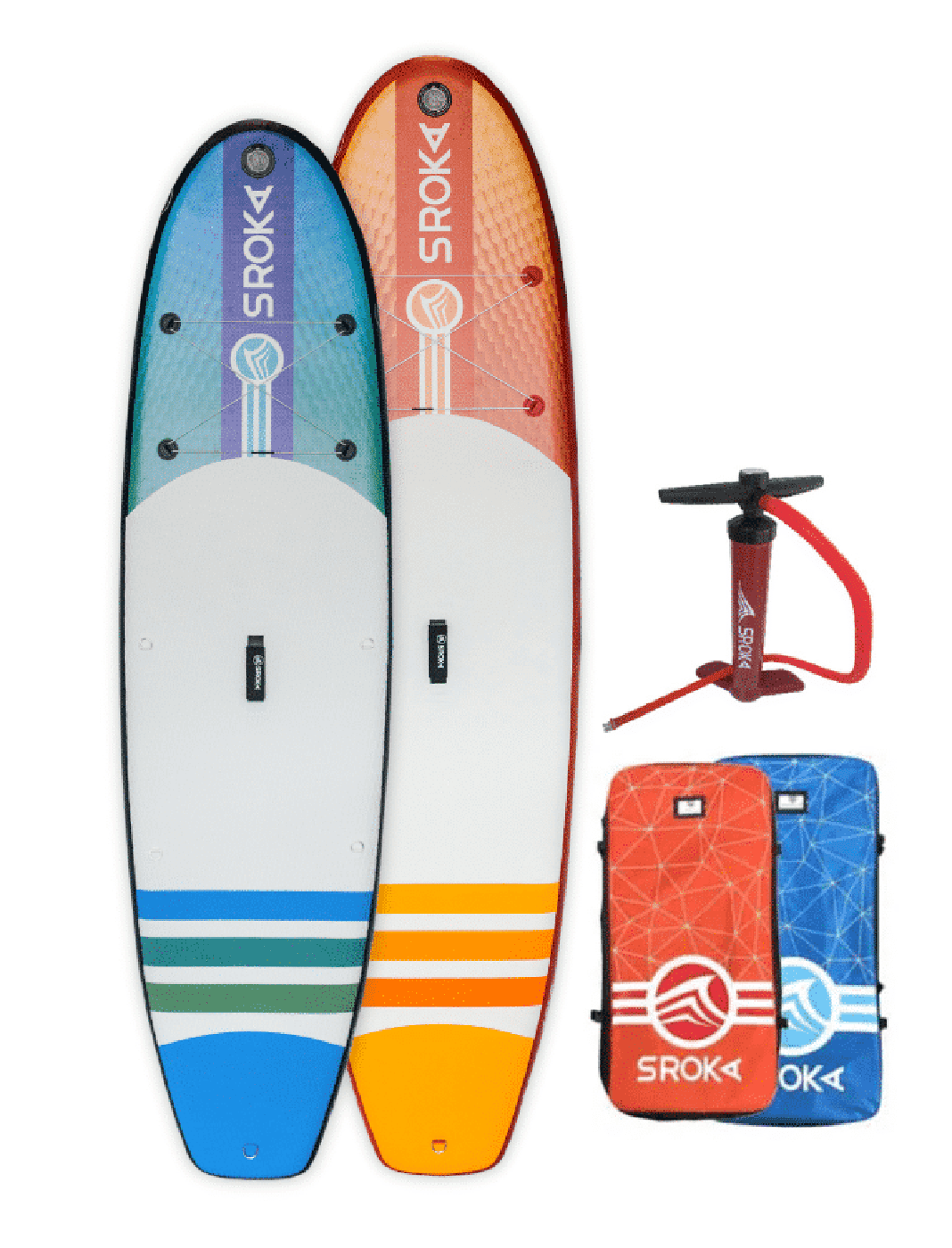
The versatile paddle: the MALIBU
The Malibu paddle is the SUP all-rounder par excellence. From surfing to hiking to paddle yoga, the Malibu will follow you wherever you go. Built to the same high standards of construction and quality as the Wave, the Malibu guarantees unfailing rigidity and durability.
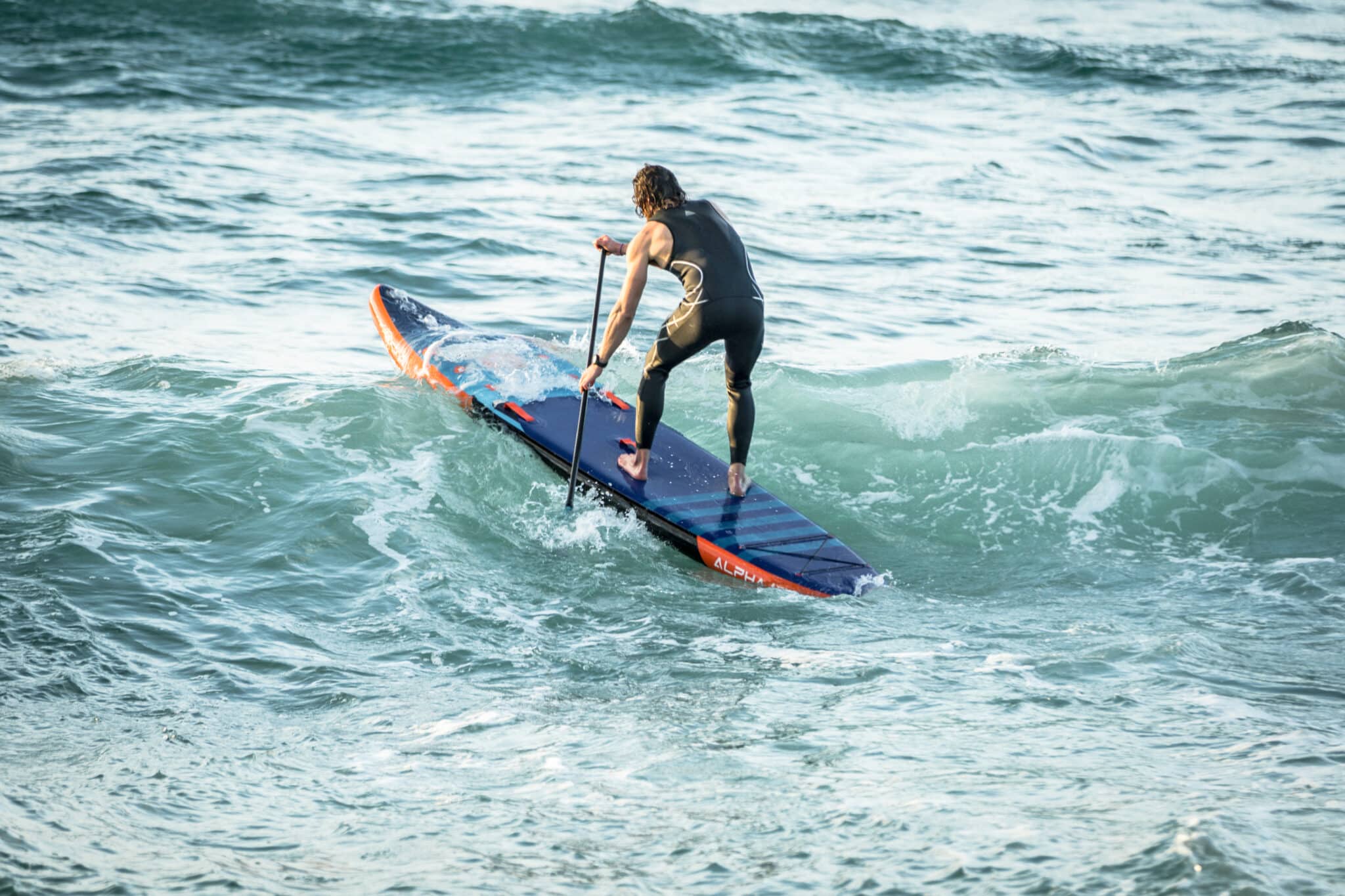
Inflatable paddle surfing: breaking the foam barrier
To surf with an inflatable paddle, just like surfing or with a hard paddle, you have to get over the foam barrier. If this is your first surfing session, we advise you to choose a beach where conditions are not too rough. It will be easier to learn on small to medium-sized waves without too much power.
Passing the bar means moving from the area where the waves break (called “the foam”) to the area where the waves move forward without breaking. To do this, you can stand or kneel, depending on how comfortable you feel. You can place your feet in the surf position, one in front of the other, or with both feet parallel. You can try both positions and see which works best for you. When you need to pass a wave, bend your knees slightly to cushion the movement.
What if the wave is too big? If you find yourself in front of a wave that seems too big to pass on your knees or standing up, jump into the water. Make sure that no one is behind you who could get caught in your paddle. That’s why it’s important to wear a leash when surfing with a paddle.
Dealing with other surfers
When inflatable paddling, as with surfing, it’s important to respect the rules of safety and courtesy. Here’s a list of tips for a good session:
- First of all, keep a safe distance from other surfers. The spot belongs to everyone, so please don’t get in their way or put them in danger.
- Next, be careful when you pass another surfer. Make sure you do it safely and without disturbing him.
- If you fall off your paddle, stay calm and try to bring your board back to you as quickly as possible by pulling on your leash.
- Finally, if a surfer is already on a wave, don’t take it. The surfer who catches the wave first has priority.
If you have any further questions, or if you have any other requests, please don’t hesitate to contact us!
 Le Magazine
Le Magazine



